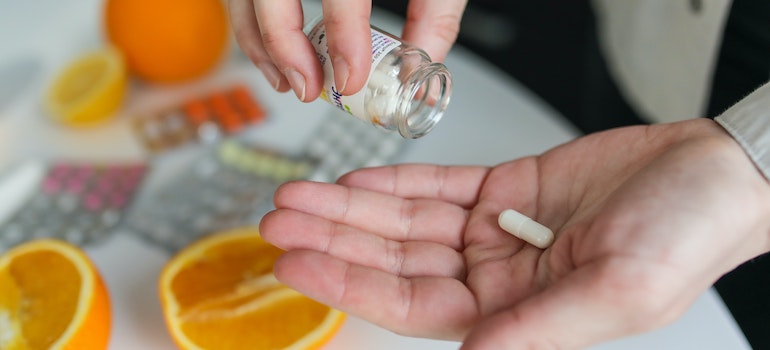Cocaine Detox Timeline – How Long it Takes and What to Expect?
The path to recovery from cocaine starts with understanding the cocaine detox timeline. If you or someone you care about is facing a struggle with a cocaine addiction, gaining insights into the detox process can arm you with the knowledge you need for the challenges ahead. Little Creek Recovery PA will explore the stages, symptoms, and what you can anticipate during this crucial period. We’ll also touch on various treatment options that can offer invaluable support during this difficult time.
Jump to Section
The cocaine detox timeline
Knowing what to expect and how long the cocaine stays in your system is half the battle when it comes to overcoming addiction. The cocaine detox timeline serves as a roadmap, guiding you through the initial and often challenging phase of recovery. In this section, we’ll break down the cocaine detox timeline into distinct stages, each with its own set of symptoms and challenges. This way, you can prepare mentally and emotionally for the journey that lies ahead.

The first 24 hours
The initial phase of cocaine detox can be the most challenging. Within hours of the last dose, withdrawal symptoms like fatigue, anxiety, and irritability can set in. You may also experience intense cravings, making the first day a critical time for relapse. During these initial hours, your body starts to realize that it’s not getting the substance it’s dependent on.
This realization triggers a range of physical and psychological responses. It’s a time when emotional support is invaluable. If you’re going through this alone, consider reaching out to an addiction treatment center for immediate assistance. Medical professionals can monitor your symptoms and provide medication to ease the discomfort, making the first 24 hours of sober living more manageable.
Days 2-4: The peak phase
Symptoms typically peak around the second to fourth day. During this time, you may experience increased irritability, depression, and restlessness. It’s essential to have a strong support system, whether it’s family, friends, or professionals at a Pennsylvania residential treatment center has to offer, to help you manage these symptoms.
This is often the period when people feel the most vulnerable and are at the highest risk of relapse. It’s crucial to stay committed to your detox plan. Surround yourself with positive influences and engage in activities that distract you from cravings. Exercise, even light walks, can help release endorphins, which naturally combat feelings of depression and anxiety.
Days 5-7: The easing phase
By the fifth day, the acute symptoms usually start to subside. However, psychological cravings can still persist. This is where medication-assisted treatment can be particularly helpful, as it can alleviate some of the withdrawal symptoms and cravings. During this phase, you’ll start to feel more like yourself, but it’s essential to remain vigilant.
The easing of symptoms can sometimes lead to overconfidence, making you think you can handle a small dose. This is a dangerous mindset and can quickly lead to relapse. Continue to follow your treatment plan and consult healthcare providers for ongoing support and guidance.
Week 2 onwards: The long haul
After the first week, most physical symptoms will have subsided. However, psychological symptoms like depression and cravings can linger for weeks or even months. This is why long-term treatment plans, often involving sober living environments, are crucial for sustained recovery.
During this extended phase, it’s essential to engage in ongoing addiction treatment to address the psychological aspects of addiction. Cognitive Behavioral Therapy (CBT) and other forms of counseling can provide you with the tools to manage cravings and avoid triggers. Support groups can offer a sense of community and accountability, which are invaluable for maintaining a drug-free lifestyle.

Symptoms to expect during the cocaine detox
When you embark on the journey of cocaine detox, it’s crucial to know what to expect during recovery. Being prepared can make the process more manageable and less intimidating. Symptoms can be broadly categorized into physical and psychological types. Each comes with its own set of challenges but understanding what to expect can equip you with the tools to tackle them head-on. Let’s delve into these symptoms in more detail.
Physical symptoms
As you begin your detox, your body starts to adjust to the absence of cocaine, triggering a range of physical symptoms. These can include:
- Fatigue
- Increased appetite
- Physical discomfort or pain
- Nausea
- Sweating or chills
These symptoms are your body’s natural response to the sudden cessation of a substance it has become dependent on. Medical supervision, often available at specialized addiction treatment centers, can help manage these symptoms and make detox more comfortable.
Psychological symptoms
Detoxing from cocaine is not just a physical challenge; it’s an emotional one too. The psychological symptoms can sometimes be even more difficult to manage than the physical ones. You may experience:
- Mood swings
- Irritability
- Depression
- Anxiety
- Intense cravings
These symptoms can be particularly challenging, but you don’t have to go through them alone. Support from friends, family, and professionals can be invaluable.

Treatment options to consider
Embarking on the journey to sobriety is a monumental step, and knowing your treatment options is crucial. The path to recovery isn’t one-size-fits-all; it’s as unique as the individuals who walk it. From specialized treatment centers to medication-assisted programs and meditation therapy, a variety of options can help you achieve and maintain a drug-free life. Let’s explore these treatment options in greater detail to help you make an informed decision on your recovery journey.
Cocaine addiction treatment centers
A specialized cocaine addiction treatment center is often the first point of contact for many seeking to break free from addiction. These centers offer a holistic approach to recovery, combining medical supervision, therapy, and peer support. These elements are crucial for both a successful detox and long-term recovery.
When you opt for a specialized center, you’re not just getting medical care but joining a community committed to your well-being. Whether it’s individual counseling or group therapy, these centers offer a range of services tailored to your needs. Additionally, many of these centers offer amenities like fitness programs and nutritional guidance, further supporting your journey to a healthier life.
Medication-assisted treatment
Medication-assisted treatment is another viable option, especially for those who find the withdrawal symptoms too challenging to manage. This approach involves using FDA-approved medications to alleviate withdrawal symptoms and reduce cravings. It’s a method that can make detox more bearable and significantly increase your chances of long-term recovery.

Medication assisted treatment is often integrated into broader addiction treatment programs, providing a multi-faceted approach to recovery. This method is especially beneficial when combined with behavioral therapies, offering a well-rounded treatment plan that addresses both the physical and psychological aspects of addiction.
Navigating your cocaine detox timeline with confidence
Understanding the cocaine detox timeline and the various treatment options available can empower you to take control of your journey to recovery. From the initial 24 hours to the long haul, each phase comes with its own set of challenges and symptoms. But remember, you don’t have to face them alone. Whether it’s specialized treatment centers or medication-assisted programs, there’s a pathway to recovery that’s right for you.
Knowledge is power, and being well-informed about what to expect can make a significant difference in your detox and recovery process. So, as you embark on this life-changing journey, take heart in knowing that you’re well-equipped to navigate the ups and downs that lie ahead. Stay committed, seek the support you need, and don’t hesitate to explore the various treatment options that can help you achieve a drug-free life.